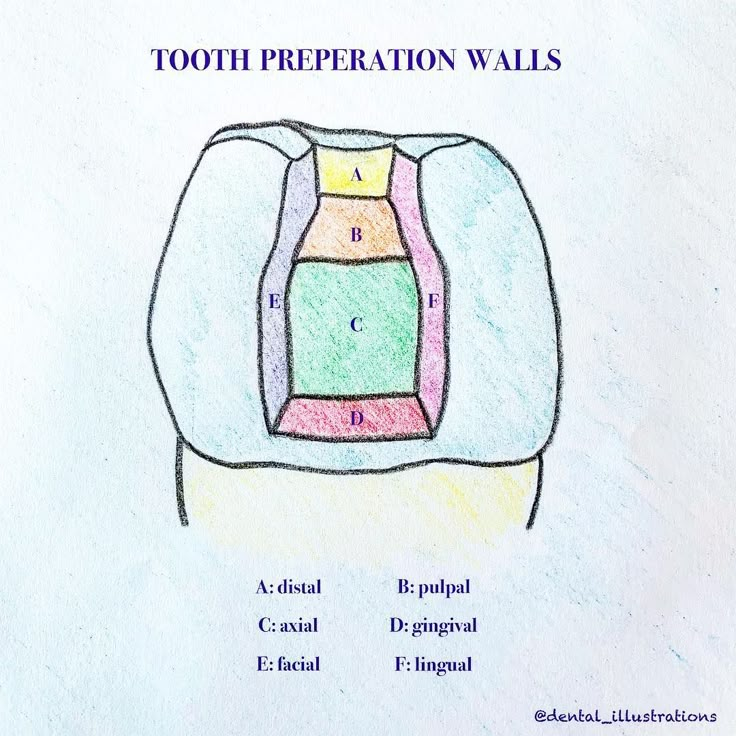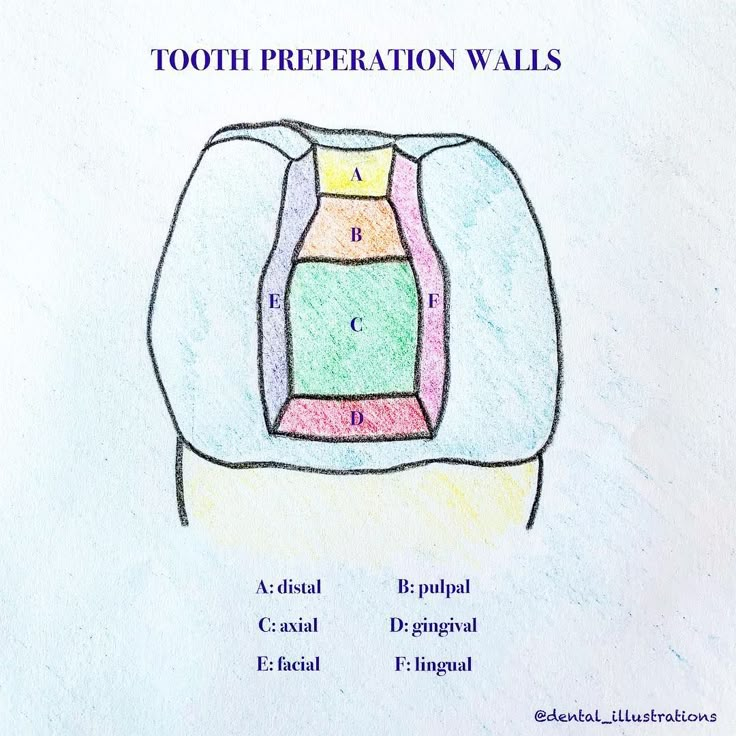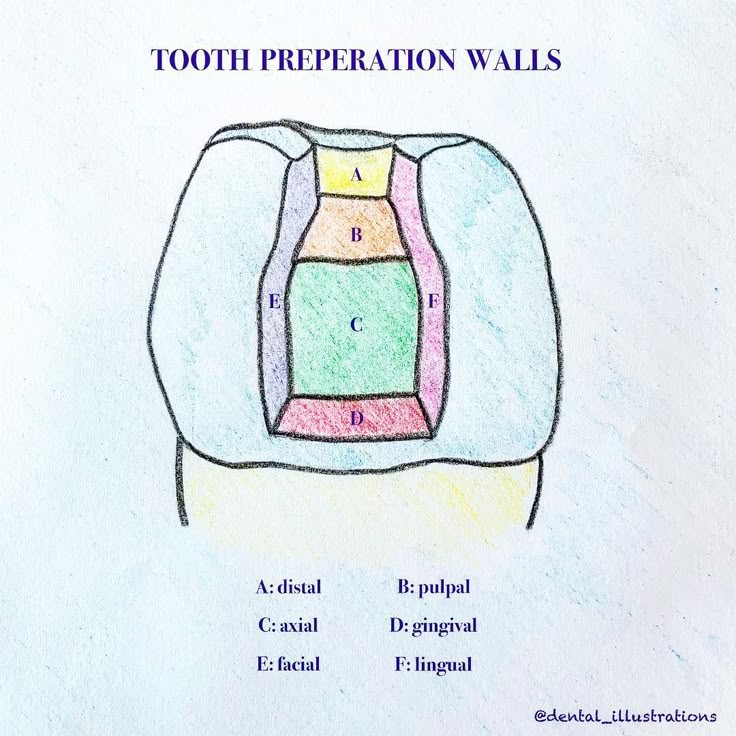Restorative Techniques & Materials I Final
1/41
There's no tags or description
Looks like no tags are added yet.
Name | Mastery | Learn | Test | Matching | Spaced |
|---|
No study sessions yet.
42 Terms
Buccal wall
Buccal portion of tooth preparation.

Axial wall
Part of box closest to pulp (internal wall).

Pulpal floor
Part of occusal prep closest to the pulp (internal wall).

Gingival floor
Floor of box closest to gingiva (internal wall).

Cavosurface margin
Border where the preparation/restoration meets the tooth.
Internal line angles
Where two internal walls of a tooth preparation meet.
Steps to prepare and restore a posterior tooth
EHR, shade choice, anesthesia, rubber dam (clamp 1 tooth distal to contralateral lateral), prep, isolate tooth with sectional matrix, selectively etch, bond, fill in increments, finishing, check occlusion
Steps to prepare and restore an anterior tooth
EHR, shade choice, anesthesia, rubber dam (premolar to premolar), prep, isolate tooth with mylar strip, selectively etch, bond, fill in increments, finishing, check occlusion
Why do you fill composite in increments
Less shrinkage and ensure proper curing
Diamond burs
Burs used for cutting
Carbide burs
Burs used for finishing composite restorations
Which is a finer bur: red line or yellow line
Yellow line
When do you do a slot prep?
When there are no occlusal caries (only on posterior teeth).
When do you do an OL prep?
When caries extend along OL groove (most commonly maxillary 1st molar)
When do you do a class III prep?
When caries are on proximal surfaces of anterior teeth
When do you do a class V prep?
When caries are at the gingival third
When do you bevel?
Class V facial anterior
When and where do you break contact?
If the caries go there
Can you ever leave unsupported enamel?
No
Which should you do - break buccal and/or lingual contact or leave unsupported enamel?
Break buccal and/or lingual contact
In clinic, how do you determine how deep to prep?
Guided by where the caries are
What do we use when placing amalgam that we do not use with composite?
Amalgam carrier
Which is caries - Class V...erosion? Caries? Abfraction?
Caries
Early caries- can we reverse?
Yes
Early caries- can we arrest?
Yes
Early caries- do we need to intervene surgically?
No
How do we visualize caries on anterior teeth?
Radiograph, clinical observation, transillumination
How do we visualize caries on posterior teeth?
Radiographs and clinical observation
Occlusal-lingual caries may be found on which teeth?
Maxillary 1st molars (#3 and 14)
Incisal caries may be found on which teeth?
Incisors (#7-10, 23-26)
What should you do if you see a chalky white spot on the occlusal groove a a tooth with no radiographic evidence of decay?
Place a sealant
What should you do if there is radiographic evidence of decay into the middle third of dentin?
Surgically restore
What should you do if the patient has sensitivity?
Recommend dentifrisk (to seal dentinal tubules)
What if the white spot is not chalky and is shiny and on the facial?
Do nothing
CAD/CAM stands for…
Computer Aided Design, Computer Aided Manufacture
What can you do with CAD/CAM?
Inlays, Onlays, Crowns, Complete dentures (cannot do partial removable dental prosthesis)
When scanning the buccal bite, verification that all images are stitched properly is indicated by…
Green checkmark
How do we treat early caries, E1 and E2 lesions?
Fluoride varnish
What is transillumination used for?
Detecting caries (especially anteriors)
What forms are require in Axium?
Medical and dental history, Physical examination, Vitals, Risk assessment
What must happen in Axium in every clinic session?
Note and a code in the EHR
TxPlans in the electronic health record: what do you have to do?
Diagnoses, treatments, faculty approval, patient signature